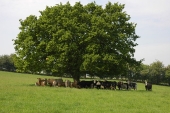
 4
4




AgroVentures Peru - https://agroventuresperu.com/ *Youtube channel* https://www.youtube.com/channel/UCE5p3KK5cLv9SSS_4QgH_jw
My book, Alternative Crops for Drylands - https://www.etsy.com/listing/820577513/alternative-crops-for or https://www.amazon.com/gp/product/0988282208
 7
7




 8
8




"The only thing...more expensive than education is ignorance."~Ben Franklin. "We can easily forgive a child who is afraid of the dark; the real tragedy of life is when men are afraid of the light." ~ Plato
 4
4




Argue for your limitations and they are yours forever.
 3
3




Invasive plants are Earth's way of insisting we notice her medicines. Stephen Herrod Buhner
Everyone learns what works by learning what doesn't work. Stephen Herrod Buhner




"The only thing...more expensive than education is ignorance."~Ben Franklin. "We can easily forgive a child who is afraid of the dark; the real tragedy of life is when men are afraid of the light." ~ Plato




"The only thing...more expensive than education is ignorance."~Ben Franklin. "We can easily forgive a child who is afraid of the dark; the real tragedy of life is when men are afraid of the light." ~ Plato
 4
4




AgroVentures Peru - https://agroventuresperu.com/ *Youtube channel* https://www.youtube.com/channel/UCE5p3KK5cLv9SSS_4QgH_jw
My book, Alternative Crops for Drylands - https://www.etsy.com/listing/820577513/alternative-crops-for or https://www.amazon.com/gp/product/0988282208
 1
1




"The only thing...more expensive than education is ignorance."~Ben Franklin. "We can easily forgive a child who is afraid of the dark; the real tragedy of life is when men are afraid of the light." ~ Plato
 3
3




yet another victim of Obsessive Weeding Disorder








Rez Zircon wrote:Sheep. Sheep will graze down the understory, and trim trees up about waist-high, but they don't climb and strip off bark like goats do, and they're easier to contain than cattle. (At least so long as you don't get Barbados; they're like antelope, only worse. Never saw a fence they couldn't wriggle through.)
If you ever drive through parts of SoCal that are old juniper forest, and wonder why they all look perfectly trimmed up to 3 feet above the ground, that's from the migratory sheep flocks. Also their grazing encourages grass and discourages weeds.
My desert place was on the regular sheep migration path, and so long as the sheep came through a couple times a year, we had grass and wildflowers. When the sheep stopped coming, within a couple years it all went to weeds.
AgroVentures Peru - https://agroventuresperu.com/ *Youtube channel* https://www.youtube.com/channel/UCE5p3KK5cLv9SSS_4QgH_jw
My book, Alternative Crops for Drylands - https://www.etsy.com/listing/820577513/alternative-crops-for or https://www.amazon.com/gp/product/0988282208




Marco Benito wrote:Cows de-barking trees is a mineral deficiency issue. We finally resolved this by putting mineral licks in with the cows. I was amazed. Even though they do browse, they quit because of the mineral licks. They browse and de-bark because they are looking for minerals the trees provide because the tree roots are bringing it up from a different location in the soil profile. I suspect also because trees tend to grow in fugally dominant soil. Greg Judy at green pastures farm has info. on this. We used the half barrel licks you get at tractor supply or big R. In conjunction with the mineral licks I would plant way, way, way, more trees than you think. Kind of like the Mark Sheppard approach he calls STUN, Sheer Total Utter Neglect. That way what lives, lives, and what survives, survives, and what dies, dies. Goats will totally browse new trees down to sticks and kill them, not such a good idea with little trees; sheep not so much. Cows will eat them by chance more than with intent like goats.
Maybe you should do some really high stock density grazing with the cows first. By high stock density I mean 100k pounds per acre or more; you can do this by putting 25 cows on a quarter acre per day, to really get a boost going on the soil regeneration first, then come in with your bzillions of trees and sheep. I'm sure you will not have any trouble finding someone with cows that needs a little grazing room.
AgroVentures Peru - https://agroventuresperu.com/ *Youtube channel* https://www.youtube.com/channel/UCE5p3KK5cLv9SSS_4QgH_jw
My book, Alternative Crops for Drylands - https://www.etsy.com/listing/820577513/alternative-crops-for or https://www.amazon.com/gp/product/0988282208

|
I'm not dead! I feel happy! I'd like to go for a walk! I'll even read a tiny ad:
Homestead Pigs Course
https://permies.com/wiki/365748/Homestead-Pigs
|

